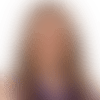Women are rising up the ranks throughout professional football, earning positions of power in a space that for too long was ruled almost exclusively by men. We're seeing more and more women breaking barriers in the sport, but what are the stories beyond the headlines? Who are the women shaping and influencing the NFL today? Answering those questions is the aim of the Next Woman Up series. While the conversational Q&As are edited and condensed for clarity, this is a forum for impactful women to share experiences in their own words. Without further ado, we introduce:
Michelle Xiao
Position: A student at Stanford University School of Medicine who is currently in a month-long clinical rotation with the San Francisco 49ers medical staff through the NFL Diversity in Sports Medicine Pipeline Initiative
How did you become part of the NFL Diversity in Sports Medicine Pipeline Initiative?
I had heard about this program when it first started in 2022. I have been interested in sports medicine and orthopedic surgery as a future career, and I'm also a big NFL fan, so the two interests aligned perfectly with this opportunity. There was a Stanford medical student in the program last year, and I had heard great things about it. So I sent in an application, and luckily, I was given the opportunity to be part of it.
What does a typical day in this program look like for you?
The schedule is pretty variable, but I am primarily at the team facility almost every day the players have training. Before I go to the facility, I am in the operating room with Dr. Tim McAdams or Dr. Geoff Abrams at Stanford and help out with some surgeries in the morning. Then I'll go to practice, which usually begins around 10:30 a.m. After practice, I see athletes who needed assessment of injuries or a follow-up in the training room with a team physician -- Dr. McAdams, Dr. Abrams or Dr. Nino Saglimbeni, whoever was covering practice that day. I also interacted a lot with the rest of the sports medicine staff (especially Tomo Harada, Dustin Little, Manny Rivera, Jonathan Dickey, Mike Sola and Katie Carden) and learned so much from them, as well. Getting to see the full picture of the medical staff behind the team and how that group as a collective gets players back on the field as soon and safely as possible has been really interesting. Some days are also spent in clinic with the team physicians seeing their patients.
I am definitely getting a lot of experience, learning a lot you would never learn in a rotation in a hospital. I have been able to sit down with the team doctors and review MRIs and physical exam skills, so I am able to pick their brains and learn from their expertise.
It sounds like you kept pretty busy. What were some of your biggest takeaways?
I mentioned the team behind the team, and I've learned a lot about what it takes behind the scenes to take care of professional athletes. The sports medicine staff works tirelessly, seven days a week, to optimize player health and recovery from injuries. I saw how the athletic trainers, physical therapists, strength and conditioning coaches and team physicians are in constant communication with each other about injuries and rehab plans. Everyone is working their hardest to best support the team, and it's a great environment to be surrounded in. I get to see players go from being assessed for injury to working through their rehab and making it back onto the field.
Do you have a favorite moment from this rotation?
I got the opportunity to be on the sidelines with the team physicians during a home preseason game against the Saints. This was my favorite moment, because the game-day environment is unmatched. Players and staff are locked in and focused. Getting to walk out of the tunnel at Levi's Stadium to all the energy and excitement that the fans bring makes for an electric atmosphere. Since I have been at almost every practice and have gotten to know some of the players, it was extra rewarding to be able to watch them showcase their abilities. From the medical perspective, I got to see how our medical team works together with the officials and NFL staff to prioritize player health and safety. The medical personnel all met together one hour before kickoff for introductions and emergency action plan review. Everyone has their responsibilities during the game, and I was impressed by how big of a medical team there is available on the sidelines. I also met the medical student rotating with the Saints, and it was fun to share our experiences.

Do you have any mentors? And what have you learned from them?
Mentorship has been a big part of my medical school journey, and I am so fortunate to have found the best mentors who are uplifting and supportive. Many of my mentors are in Stanford's sports medicine department, since I have worked on some research projects with the faculty. Dr. Abrams has been one of my greatest mentors. He has taught me so much about orthopedic surgery and sports medicine in the operating rooms and in his clinic throughout the years. Getting to work with him on the sidelines and in the 49ers training room is very rewarding. Now with the NFL Diversity in Sports Medicine rotation with the 49ers, I have gained more incredible mentors in Dr. McAdams and Dr. Saglimbeni, who I know will be lifelong mentors, as well.
You briefly mentioned you had an interest in sports medicine and orthopedics prior to this rotation. What first interested you in this career path, and how has this experience with the 49ers influenced your vision for your career, if at all?
My interest in orthopedic surgery and sports medicine started with exposure as an athlete playing college soccer at Stanford. I got to know some of the Stanford team physicians through my own injuries, and this set me on the path to pursuing orthopedic surgery as a profession. I also spent last year in Europe playing professional soccer for Slavia Prague in the Czech Republic. It was a phenomenal experience, and our team was pretty successful, too. We won the Czech League and Cup, and we played in the UEFA Women's Champions League, which is the highest level of competition in European women's soccer. I was fortunate enough to start all of our Champions League games and play against some of the best players in the world.
Having the unique opportunity to rotate with an NFL team is not something a lot of people get to experience, so I have been trying to make the most of it. For me, it was hard to envision that a rare career, such as NFL team physician, would be attainable -- until I stepped foot in the environment. Also, there aren't many female team physicians in the NFL, so I am very grateful to the NFL Diversity in Sports Medicine Pipeline Initiative for giving me the exposure with the 49ers. Now that I've spent some time with the 49ers team physicians, I feel better quipped to handle the evaluation of athletic injuries, and it makes me more eager to aim high for my career goals. I hope to one day become a team physician working with high-level athletes.













